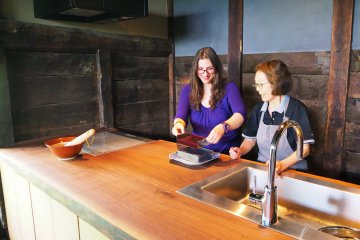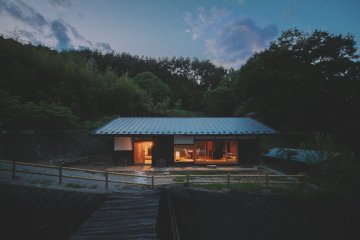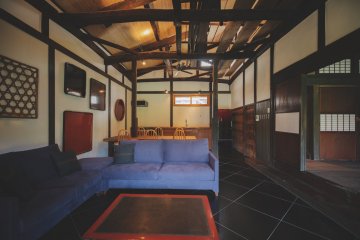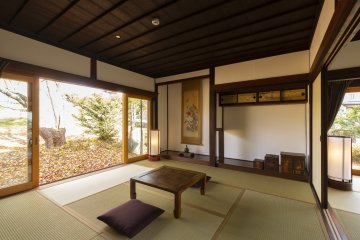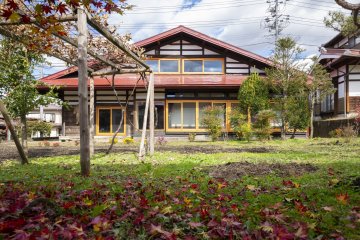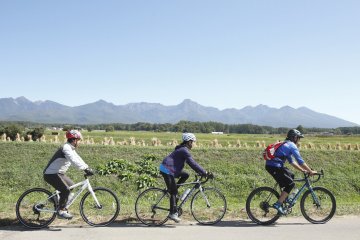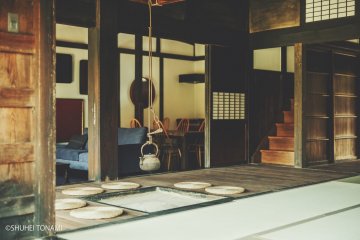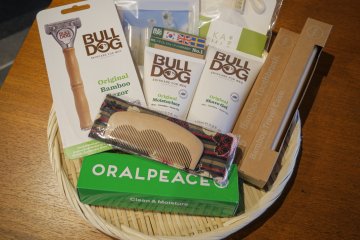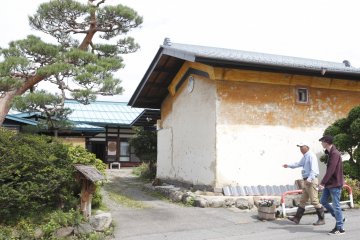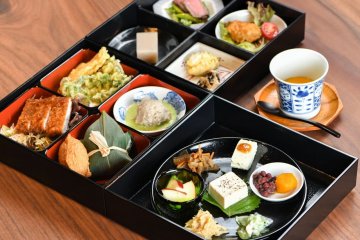Imagine century-old farmhouses with sturdy pillars and beams that retain all the beauty of traditional architecture while offering modern comforts. They are private accommodations, not unlike a vacation rental, that you can thoroughly enjoy with your family and friends.
The setting is Yamaura, a nostalgic rural area in the mountains of Nagano where traditional kura storehouses flank the villages’ narrow winding alleys, and where you can spot local people wearing large straw hats at work in the fields in-between.
How you experience the stay is up to you. You can relax by simply enjoying the peaceful atmosphere of a traditional village straight out of an old tale. Or maybe, you can mingle with the locals; join the local grannies and make miso, pickle vegetables or cook the typical dishes of tradition. Whatever you choose, you are sure to have an authentic rural experience.

What is Yamaura?
Yamaura means “in the mountain’s shadow,” and describes the unique environment of the hamlets that stand right under the “eight” peaks of Yatsugatake, between an elevation of 1,000 and 1,200m. The area sits astride the “riceline,” above which no rice can grow, meaning the villagers grow their crops defying severe winters and chilly springs.
Living halfway through the mountains is not devoid of challenges, but it is very rewarding. After all, people have inhabited the Yamaura for 10,000 years, always in sync with the seasons and in harmony with nature.

Four farmhouses tastefully renovated by Alex Kerr
The four farmhouses in the Yamaura lineup bear the signature of Alex Kerr, who is well-known for his work in Iya Valley in the remote countryside of Shikoku Island. An authority in traditional house restoration, Alex Kerr’s style effortlessly combines old-world aesthetics and present-day comfort.
The Yamaura Stay farmhouses are no exception. They have all the necessities to create a cozy living space, from modern bathrooms to state-of-the-art kitchen appliances. The timeless beauty of the historic architecture, though, is left intact.

Kiyomizu Farmhouse
Kiyomizu is the oldest farmhouse, said to have been built in the early 1800s. It was the main house, the one inherited by the first son, and its central role in family life is reflected in its size and the thickness of its columns and beams.
This house has countless charms, including its location inside a nostalgic hamlet that looks straight out of a Japanese old tale and the lovely garden with a pond and well-trimmed bushes in front of the porch.

From an architectural point of view, the dining room is what stands out the most. The vast room, characterized by high ceilings and thick crossed beams, used to be the uma-ya, an in-house stable where local farmers kept their beloved horses. In line with Alex’s philosophy, the original rustic earthen walls and perforated pillars where the horses were tied up were incorporated into the final design.

Shibumichi Farmhouse
Intended to be home for a big family, this farmhouse is the biggest in the lineup. It is also the only two-storied building.
Like in Kiyomizu, the "umaya" (in-house stable) now serves as the dining and living room. Glossy lacquered "tabletops" in red and black and wicker trays decorate the walls. The plushy indigo sofa and the fully-equipped kitchen complement the nostalgic quaint atmosphere exuding from the weathered walls and beams.

The second floor, which was devoted to silkworm rearing, now holds the master bedroom. The decorations in this room are all antique instruments that were once used to make silk thread.

The true highlight of the house, though, is the irori hearth on the first floor. After all, nothing screams 'rustic Japan' more than an irori hearth.

Dining
Meals are not included in the basic stay plan, but there are different options you can select for an additional fee. If you seek interaction with the locals, there are fun cooking activities, while if you would rather have a quiet evening on your own, you can get a delivery meal, cook for yourself, or eat out.
The “Cooking with the Village Grannies” experience is a great way to discover traditional local flavors and immerse yourself in local rural life. Every experience starts with a seasonal task such as picking vegetables or making dried persimmons. Then, you get to cook and eat a hearty four-course meal with a cute grannie. Some typical Yamaura delicacies include Abura-e mochi (countryside-style rice cakes served with a fragrant perilla sauce packed full of flavor), crispy wild vegetable tempura, and dainty, colorful agar cakes.


Delivery meals are also delicious. For breakfast, you can either choose a Japanese-style or Western-style set meal. The food is made by a local woman who runs her own farmhouse restaurant, grows her own vegetables, and hand-makes her own condiments. As for dinner, there are a couple of options, with both Japanese meals inspired by local cuisine coming in bento boxes.

Doing your own cooking or visiting one of the many restaurants in the area is a nice choice, too. However, it is not feasible unless you have a car, as there are no grocery stores or eateries within walking reach.
Mingle with the locals, Experience rural life
There are a bunch of activities you can join during your time at the farmhouse. There are some cooking activities, (as I described above) but also cycling tours, walking tours, half-day farmer’s homestays, visits to local craftsmen, and more.

If you are staying at the Kiyomizu farmhouse (or Hanato), there are guided walking tours of the village led by the villagers. As I mentioned above, the hamlet that contains Kiyomizu and Hanato looks straight out of an old Japanese tale. Among antique storehouses, terraced fields, and gurgling streams, you can still experience the romance of 'lost Japan'. Of course, you can roam through the village on your own, but if you want to know more about the locals’ daily life and traditions, joining the tour will be way more interesting. The guide will take you inside his neighbors’ gardens, storehouses, and sometimes into houses (where you obviously cannot go on your own).


Sustainability and Local involvement
Yamaura Stay is part of the sustainable tourism movement that aims to promote a way of traveling, which is eco-friendly and improves the local economy.
In Yamura, the villagers play a major role. They make up the cleaning staff, the guides, the gardeners, and the restaurateurs. For them, visitors are not something they have to put up with, but welcomed guests they enjoy hosting.

Even the amenities provided at the house reflects this ethical way of doing business. The decorative objects and tableware are antiques gifted by the previous owners and other villagers, some kitchen utensils such as the knife and chopsticks are craft works by local artisans, and skincare products are made with chamomile grown in Nagano. Also, there are no single-use toiletries in the farmhouse. Instead, eco-friendly options such as bamboo toothbrushes and natural toothpaste are on sale for those who need them.








